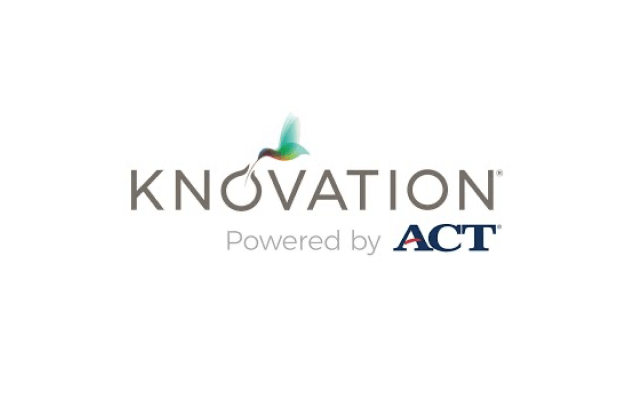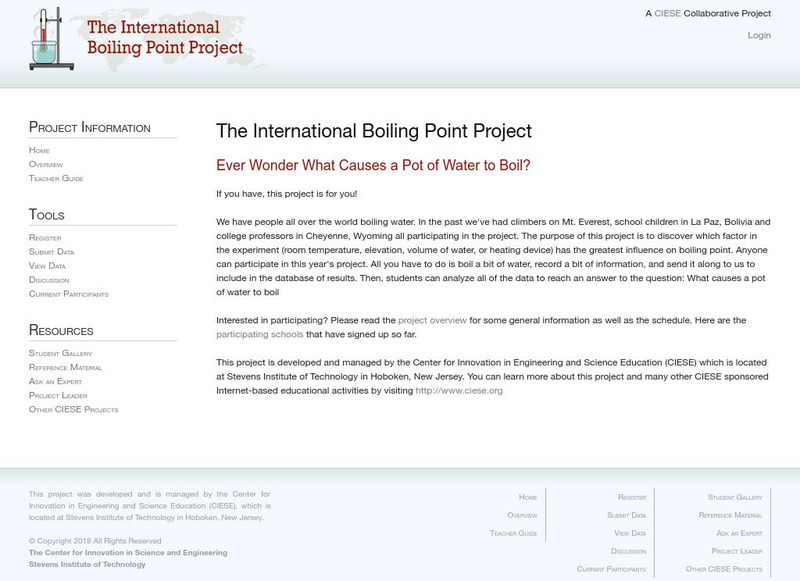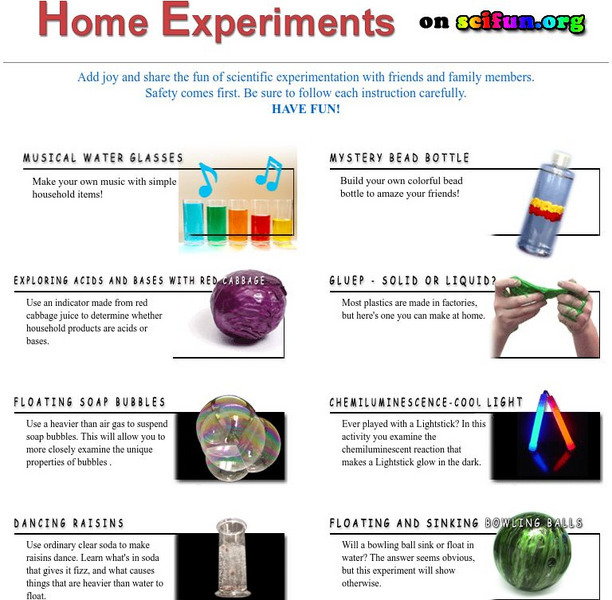Dartmouth College
Dartmouth College: Chem Lab: Quantitative Transfer
A Quantitative Transfer simply means that all the material to be transfered from one place to another must make the trip, down to the last particle. Use this site to find out how to correctly transfer a solid and a liquid.
Exploratorium
Exploratorium: Science Snacks: Bubble Tray
This activity allows students to create and observe giant bubbles.
American Chemical Society
American Chemical Society: The Best of Wonder Science: Sample Activities
A collection of nine sample science activities for elementary students, from a two-volume book by the American Chemical Society.
Center for Innovation in Engineering and Science Education, Stevens Institute of Technology
Ciese Collaborative Projects: International Boiling Point Project
The Stevens Institute of Technology has provided this great site with information on boiling points. Classes from around the nation have been encouraged to register, conduct a boiling experiment and post their data. The object is to...
Science Struck
Science Struck: Make Glowing Water Without a Black Light
Presents three easy experiments where you can make water glow in the dark.
Royal Society of Chemistry
Royal Society of Chemistry: Kitchen Chemistry: Salt and the Boiling Point [Pdf]
An experiment where students test how the boiling point of water is affected by adding salt. The experiment is well laid out with pictures that show how to perform the experiment.
Science Bob Pflugfelder
Science Bob: Lemon Chemistry: An Acid Base Experiement
Science Bob presents instructions for conducting an acid-base experiment using common supplies with information on how it works.
Science Bob Pflugfelder
Science Bob: The Giant Dry Ice Bubble Sphere
Science Bob presents instructions for making a giant dry ice bubble sphere using common supplies.
Science Bob Pflugfelder
Science Bob: The Ultimate Bubble Solution
Science Bob presents instructions for making the ultimate bubble solution using common supplies with information on how it works.
Science is Fun
University of Wisconsin: Home Experiments
This resource presents a collection of simple science experiments kids can do using household materials. The procedures include diagrams and are simple to follow.
Science is Fun
Science Is Fun: Put a Shine on It
An experiment investigating how to remove the tarnish from silver. Includes an explanation of how the silver becomes tarnished, and the chemical reaction taking place when the shine is restored.
Science Education Resource Center at Carleton College
Serc: Using Household Chemistry to Create Toothpaste
In this experiment students will create their own toothpaste using natural ingredients. They will learn that chemistry is a huge part of our lives, even down to the toothpaste we use. Students will be able to explore possible...
Bio Topics
Bio Topics: Experiments to Compare Carbon Dioxide Content of Inhaled and Exhaled Air
A science experiment comparing carbon dioxide content of inhaled and exhaled air.
Other
60 Second Science: Rainbow Gel
Examine mixtures made from different substances, and discover how to make gel.










